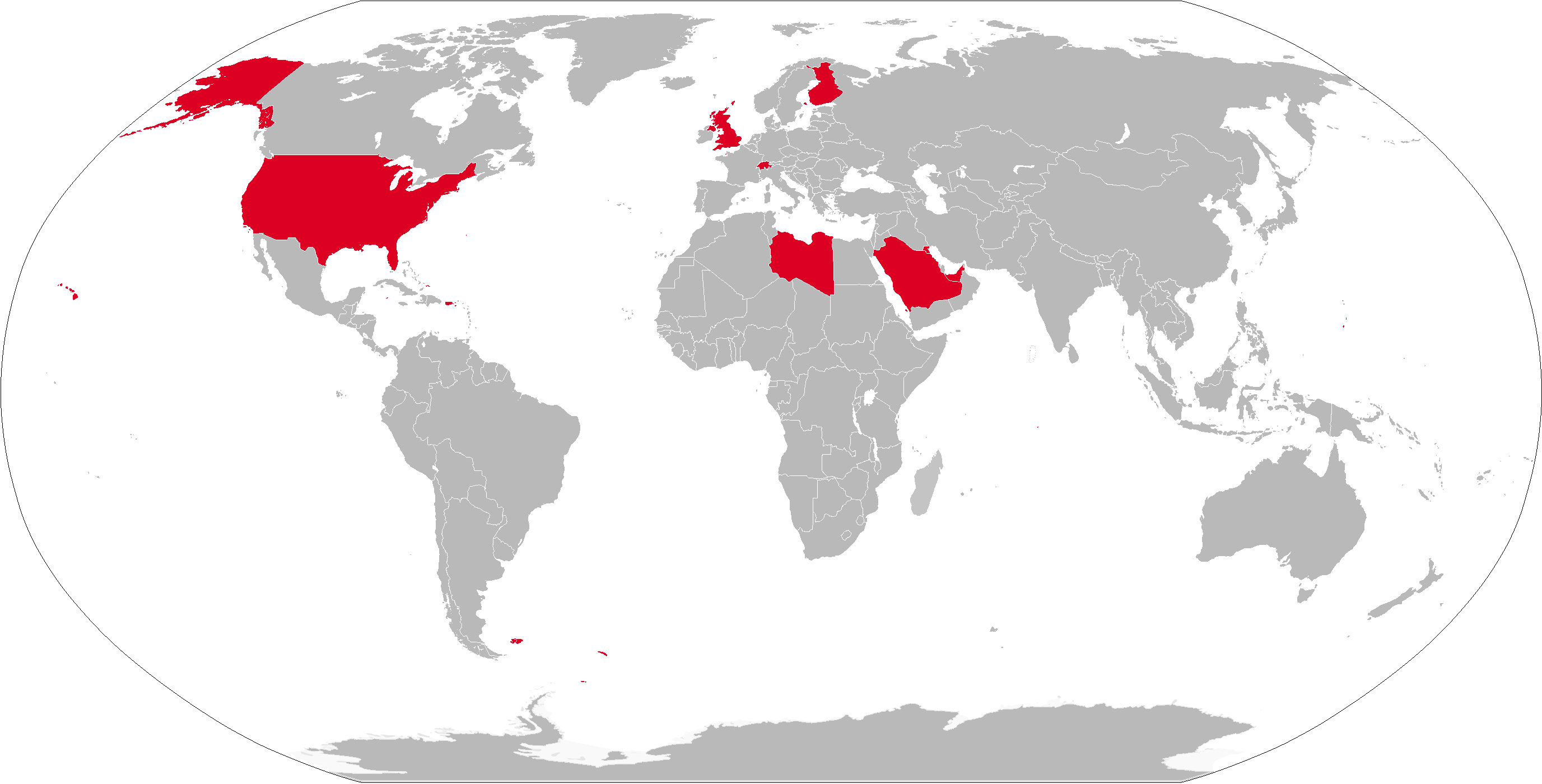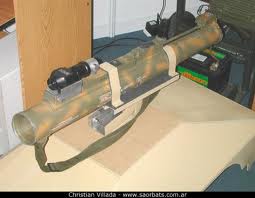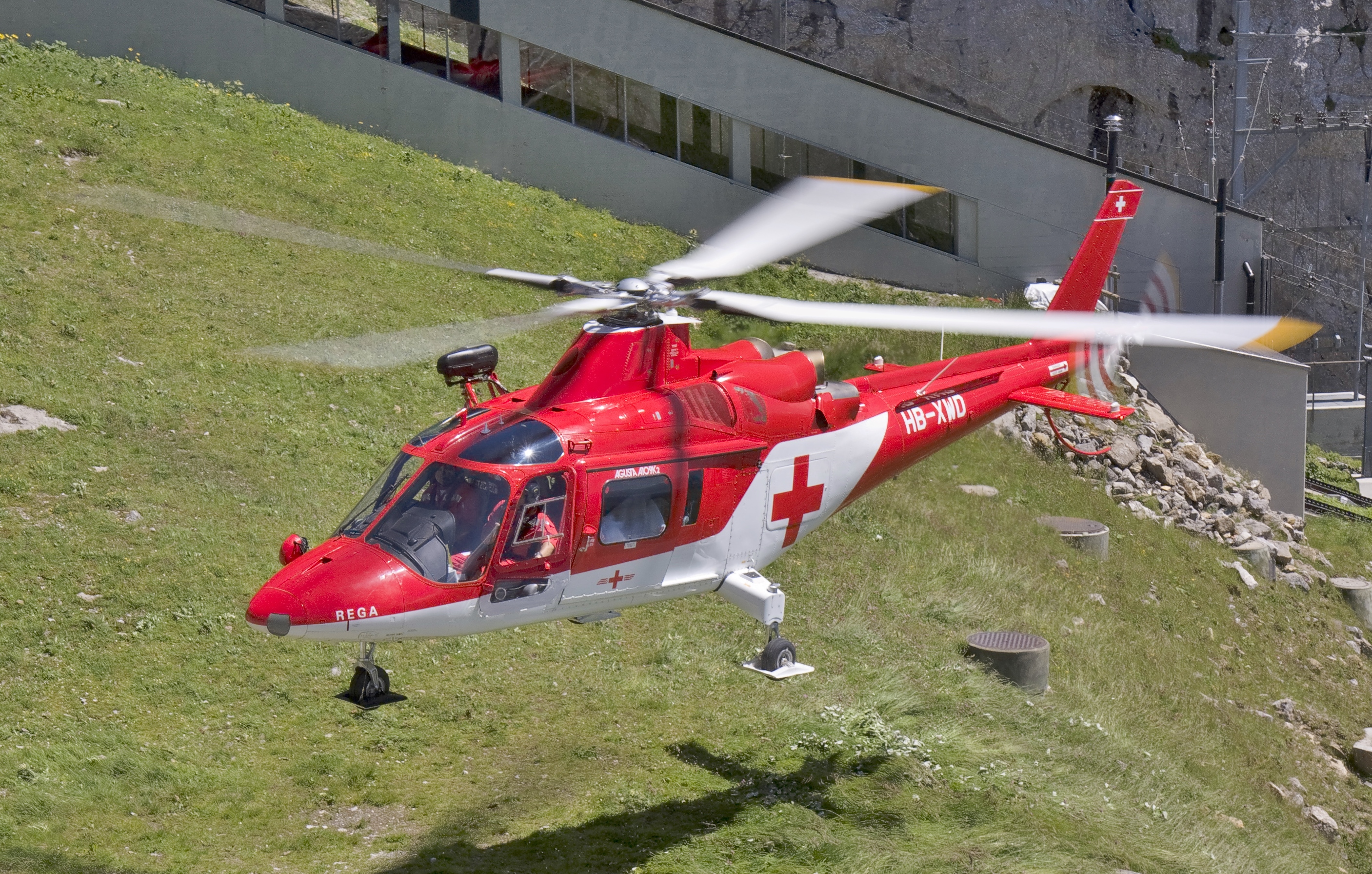|
Mathogo
The Mathogo (Acronym for ''Misil Anti-Tanque Hilo Guiado'' - en, Wire Guided Anti-Tank Missile) is an Argentine first-generation wire-guided anti-tank missile. Background The anti-tank missiles ( ATGW, anti-tank guided weapons) evolved in the late 1950s from the portable anti-tank rockets (ATR) like the bazooka, which required the operator to be close to the target, to overcome the limitations of these. History The Mathogo was developed by CITEFA (''Instituto de Investigaciones Científicas y Técnicas de las FFAA'' - the Armed Forces Scientific and Technical Research Institute) in the 1970s to supplement and eventually replace the Argentine 105-mm recoilless rifles. In design it is similar to the Swedish BANTAM by Bofors - which is reported to have been bought in limited numbers for the Argentine Marine Corps - only slightly larger and with a pointed nose section with the first versions. Some news report photo captions have even mistaken it for the BANTAM. Development ... [...More Info...] [...Related Items...] OR: [Wikipedia] [Google] [Baidu] |
CITEFA
The Institute of Scientific and Technical Research for Defense ( es, Instituto de Investigaciones Científicas y Técnicas para la Defensa, also known for its acronym CITEDEF), is an Argentine federal agency in charge of research and development in various scientific fields. It is also in charge of homologation of weaponry. Located in the Villa Martelli district of Greater Buenos Aires, CITEDEF is one of the scientific and technological organisms that depend on the Ministry of Defense and its Secretary of Planning. It is also a part of the "Constituyentes Technological Hub" along with other institutions such as the Atomic Energy National Commission (CNEA), the University of San Martín (UNSAM) and the National Institute of Industrial Technology (INTI), among others. CITEDEF currently develops a series of projects that give it an edge on research and technology at a regional level. It is the first link of the productive chain within the Production Industry for Defense through the ... [...More Info...] [...Related Items...] OR: [Wikipedia] [Google] [Baidu] |
List Of Anti-tank Guided Missiles
This is a list of anti-tank guided missiles developed by different countries. Australia * Malkara Argentina * Mathogo Belarus *Shershen Brazil *MSS-1.2 * FOG-MPM * ALAC Canada *Eryx China * CM-501G * AFT-10 * PA02-MA * PA01-GA * TS-01 * HJ-73 *HJ-8 * HJ-9 * CM-502KG * HJ-11 *HJ-10 * BA-9 * BA-7 * AR-1 * AKD-10 *Type 98 anti-tank rocket * Type 78/65 * AFT-10 *HJ-12 France *APILAS *ENTAC *Eryx *SS.10 *SS.11 * MILAN * HOT * *Polyphem * TRIGAT LR * Missile Moyenne Portée * Missile Longue Portée Germany * Cobra * Cobra 2000 * Mamba * MILAN * HOT * PARS 3 Hungary * Hungarian 44M India * DRDO Anti Tank Missile *Amogha missile *Nag missile * HELINA /Dhruvastra * SANT *MPATGM * SAMHO cannon launched anti tank guided missile *Jasmine anti tank missile - VEM technologies Iran * RAAD * Tosan * Dehlavieh/9M133 Kornet * Saeghe * Toophan * Sadid-1 * Sadid-345 * Almaz * Ghaem-114 * Ghaem-1 * Ghaem-5 * Ghaem-9 * Akhgar NLOS Israel * Orev (upg ... [...More Info...] [...Related Items...] OR: [Wikipedia] [Google] [Baidu] |
Cobra (anti-tank Missile)
The Cobra was a Swiss/West German anti-tank missile designed by the Oerlikon-Contraves and Bölkow GmbH companies. It entered service with the German Army in the late 1950s. It was followed by the Cobra 2000 and Mamba missile systems, which were upgrades that improved the guidance system and performance of the missile. The missile had limited distribution in the United States by Daystrom Inc., a licensed U.S. distributor, chiefly for evaluation purposes ( U.S. Marines were interested and evaluated the missile for purchase.) Description The Cobra has a cruciform arrangement of four large forward swept wings. The main body is a long cylinder, with an underslung launch booster. Each of the wings has a spoiler on the rear edge which is used to steer the missile. The warhead is at the front of the missile, behind which is the gyro and guidance circuitry which allows the missile to interpret steering instructions from the operator. Behind the guidance mechanism is the sustainer motor, ... [...More Info...] [...Related Items...] OR: [Wikipedia] [Google] [Baidu] |
Anti-tank Missile
An anti-tank guided missile (ATGM), anti-tank missile, anti-tank guided weapon (ATGW) or anti-armor guided weapon is a guided missile primarily designed to hit and destroy heavily armored military vehicles. ATGMs range in size from shoulder-launched weapons, which can be transported by a single soldier, to larger tripod-mounted weapons, which require a squad or team to transport and fire, to vehicle and aircraft mounted missile systems. Earlier man-portable anti-tank weapons like anti-tank rifles and magnetic anti-tank mines, generally had very short range, sometimes on the order of metres or tens of metres. Rocket-propelled high-explosive anti-tank (HEAT) systems appeared in World War II and extended range to the order of hundreds of metres, but accuracy was low and hitting targets at these ranges was largely a matter of luck. It was the combination of rocket propulsion and remote wire guidance that made the ATGM much more effective than these earlier weapons, and gave ... [...More Info...] [...Related Items...] OR: [Wikipedia] [Google] [Baidu] |
Anti-tank Guided Missiles Of The Cold War
Anti-tank warfare originated from the need to develop technology and tactics to destroy tanks during World War I. Since the Triple Entente deployed the first tanks in 1916, the German Empire developed the first anti-tank weapons. The first developed anti-tank weapon was a scaled-up bolt-action rifle, the Mauser 1918 T-Gewehr, that fired a 13mm cartridge with a solid bullet that could penetrate the thin armor of tanks of the time and destroy the engine or ricochet inside, killing occupants. Because tanks represent an enemy's strong force projection on land, military strategists have incorporated anti-tank warfare into the doctrine of nearly every combat service since. The most predominant anti-tank weapons at the start of World War II in 1939 included the tank-mounted gun, anti-tank guns and anti-tank grenades used by the infantry, and ground-attack aircraft. Anti-tank warfare evolved rapidly during World War II, leading to the inclusion of infantry-portable weapons suc ... [...More Info...] [...Related Items...] OR: [Wikipedia] [Google] [Baidu] |
Vickers Vigilant
The Vickers Vigilant was a British 1960s era MCLOS wire-guided anti-tank missile used by the British Army. It was also licence-built in the United States by Clevite for the US Marine Corps, and sometimes known as Clevite rounds in this case. It had a short service life, and replacement by the Swingfire began in the mid-1960s. History Vigilant was a private development begun in 1956 by Vickers-Armstrongs' Guided Weapons Department at Brooklands, Surrey for the anti-tank role in the British Army, the name being formed from ''VI''sually ''G''uided ''I''nfantry ''L''ight ''AN''ti-''T''ank missile. Vigilant was wire-guided, optically tracked and manually guided, like the missile it replaced in service, the Malkara. In contrast to that system, however, Vigilant included a more sophisticated guidance system that imparted changes in velocity that produced a much smoother and more predictable motion, whereas the Malkara was considered difficult to accurately guide. The same system was ... [...More Info...] [...Related Items...] OR: [Wikipedia] [Google] [Baidu] |
ENTAC
ENTAC ("Engin Téléguidé Anti-Char") or MGM-32A was a French MCLOS wire-guided Anti-tank missile. Developed in the early 1950s, the weapon entered service with the French army in 1957. Production ended in 1974 after approximately 140,000 had been built. Development The missile was developed by the French Government agency - DTAT (''Direction Technique des Armements Terrestres'') at the same time as the private industry SS.10. Development time for the ENTAC was longer than the SS.10, so it did not enter service until 1957. It proved to be a great improvement over the SS.10, which had entered production five years earlier. Once fully developed and tested, production of the ENTAC was given to the firm of Aerospatiale. The ENTAC was designed to be a man-portable weapon or operated from a small vehicle like the Jeep, replacing the Nord SS.10 in French service. Design The missile is launched from a simple metal box, which is connected to an operator station. An individual operato ... [...More Info...] [...Related Items...] OR: [Wikipedia] [Google] [Baidu] |
Nord SS
Nord, a word meaning "north" in several European languages, may refer to: Acronyms * National Organization for Rare Disorders, an American nonprofit organization * New Orleans Recreation Department, New Orleans, Louisiana, US Film and television * ''Nord'' (1991 film), a film directed by Xavier Beauvois * ''Nord'' (2009 film), or ''North'', a Norwegian film directed by Rune Denstad Langlo Music * ''Nord'' (Siddharta album), 2001 * ''Nord'' (Year of No Light album), 2006 * ''Nord'', an album by Luna Amară, 2018 * Nord, the brand name for musical instruments produced by Clavia. * ''A. G. NORD'', the fifth disc from the album 7G, by A. G. Cook. * ''Nord'' (Gåte album), 2021 People * Christiane Nord (born 1943), German translation scholar * Daniel Nord, Swedish civil servant * Elizabeth Nord (1902–1986), American labor organizer * , Norwegian software expert * John Nord (born 1959), American professional wrestler * (1912–2003), German anti-Nazi activist * Kat ... [...More Info...] [...Related Items...] OR: [Wikipedia] [Google] [Baidu] |
MARA (anti-tank Weapon)
The MARA is a portable one-shot 78 mm unguided anti-tank weapon, designed and manufactured in Argentina by Fabricaciones Militares (DGFM). The solid rocket propulsion unit was developed by CITEFA. History In the 1990s, the Argentine Army identified the need to replace obsolete short-range infantry antitank weapons in use, Such as the PDEF-40 rifle grenade, with a modern weapon similar to the AT4 locally developed and built, The MARA Project was started by DGFM in the late 1990s, and in February 2005 the weapon was tested at the “Fábrica Militar Fray Luis Beltrán”. Description The MARA is a weapon of 78 mm caliber with a fiberglass launcher tube 70 cm in length when transported that is extended to 1 meter when ready to fire. The launcher weighs about 4.2 kg, can be reused up to five times when using training ammunition, and is disposable when firing live ammunition. The anti-tank projectile is fin-stabilized, and is propelled by the rocker m ... [...More Info...] [...Related Items...] OR: [Wikipedia] [Google] [Baidu] |
Argentine Army
The Argentine Army ( es, Ejército Argentino, EA) is the land force branch of the Armed Forces of the Argentine Republic and the senior military service of Argentina. Under the Argentine Constitution, the president of Argentina is the commander-in-chief of the Armed Forces, exercising his or her command authority through the Minister of Defense. The Army's official foundation date is May 29, 1810 (celebrated in Argentina as the ''Army Day''), four days after the Spanish colonial administration in Buenos Aires was overthrown. The new national army was formed out of several pre-existing colonial militia units and locally manned regiments; most notably the Infantry Regiment "Patricios", which to this date is still an active unit. , the active element of the Argentine Army numbered some 70,600 military personnel. History Several armed expeditions were sent to the Upper Peru (now Bolivia), Paraguay, Uruguay and Chile to fight Spanish forces and secure Argentina's newly gained ... [...More Info...] [...Related Items...] OR: [Wikipedia] [Google] [Baidu] |
Agusta A109
The AgustaWestland AW109, originally the Agusta A109, is a lightweight, twin-engine, eight-seat multi-purpose helicopter designed and initially produced by the Italian rotorcraft manufacturer Agusta. It was the first all-Italian helicopter to be mass-produced."Law Enforcement: Italy." ''Police Aviation News'', No. 175. November 2010. Its production has been continued by Agusta's successor companies, presently Leonardo S.p.A. (formerly , merged into the new |







